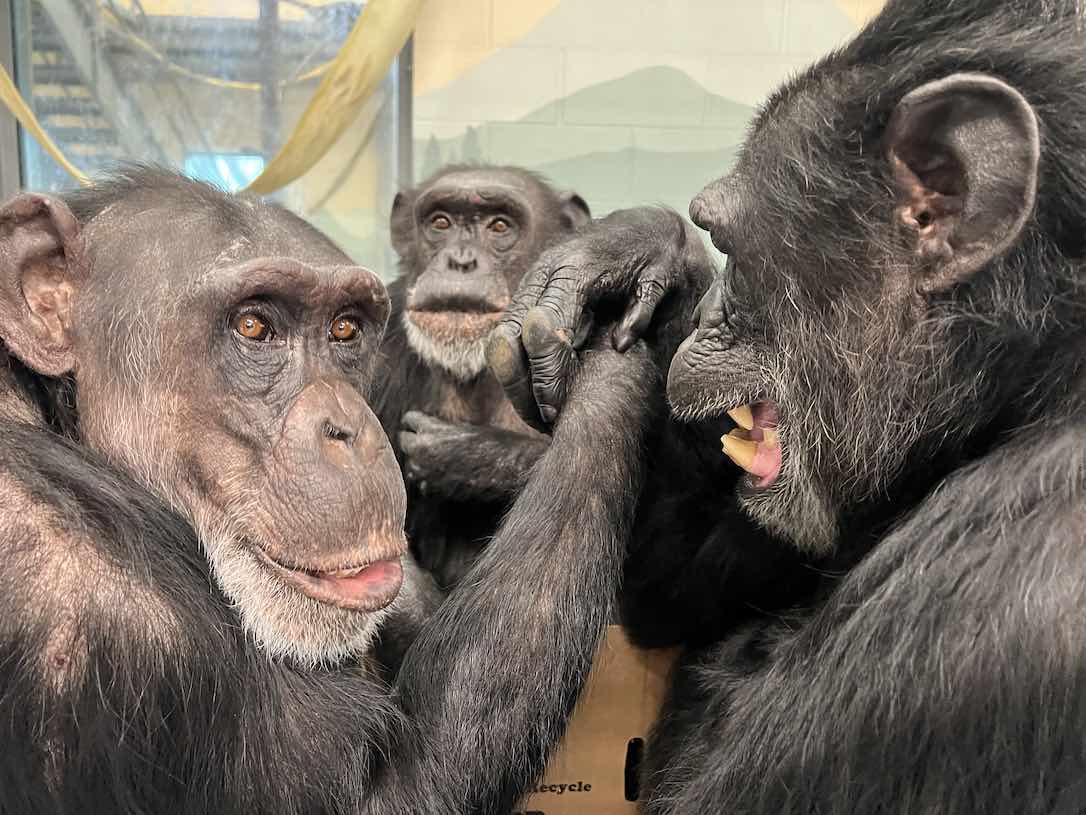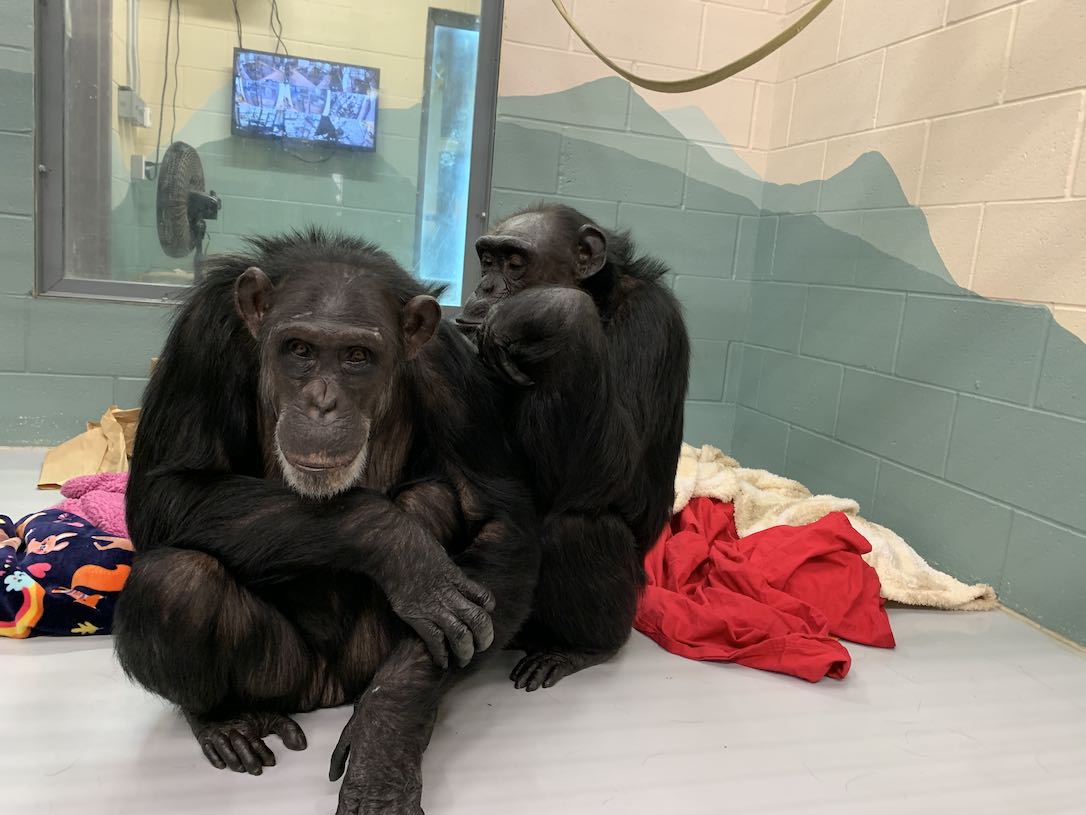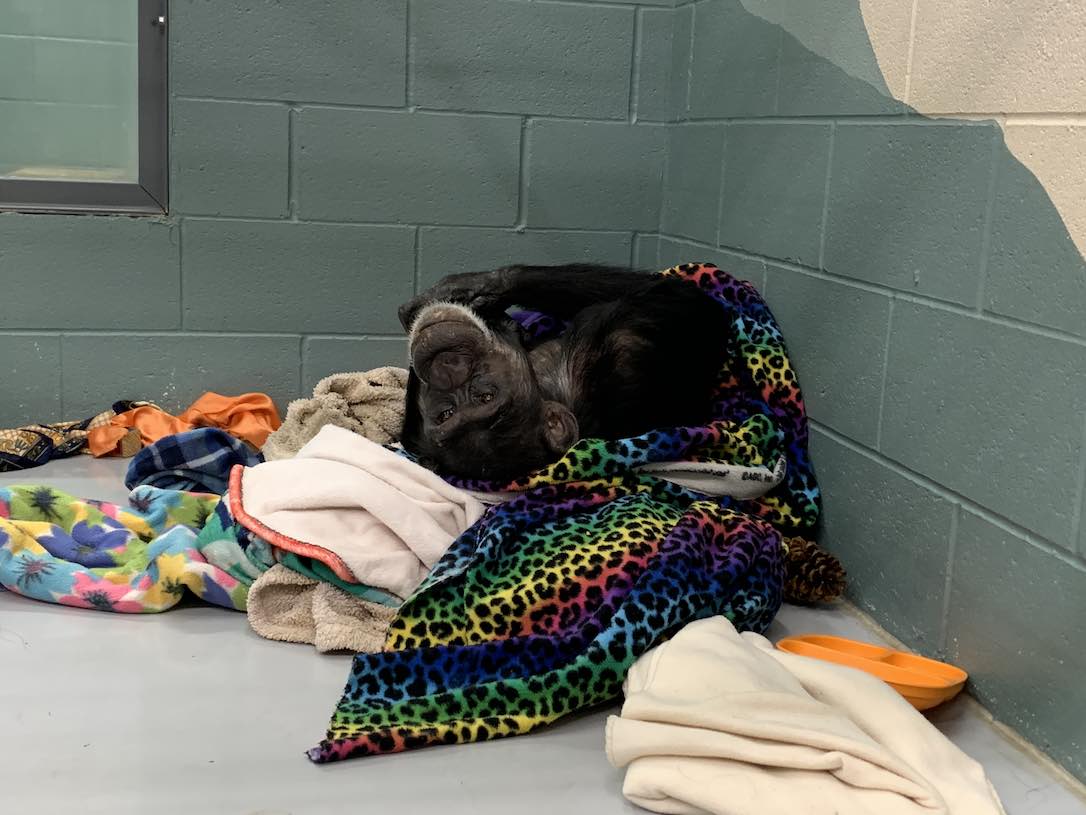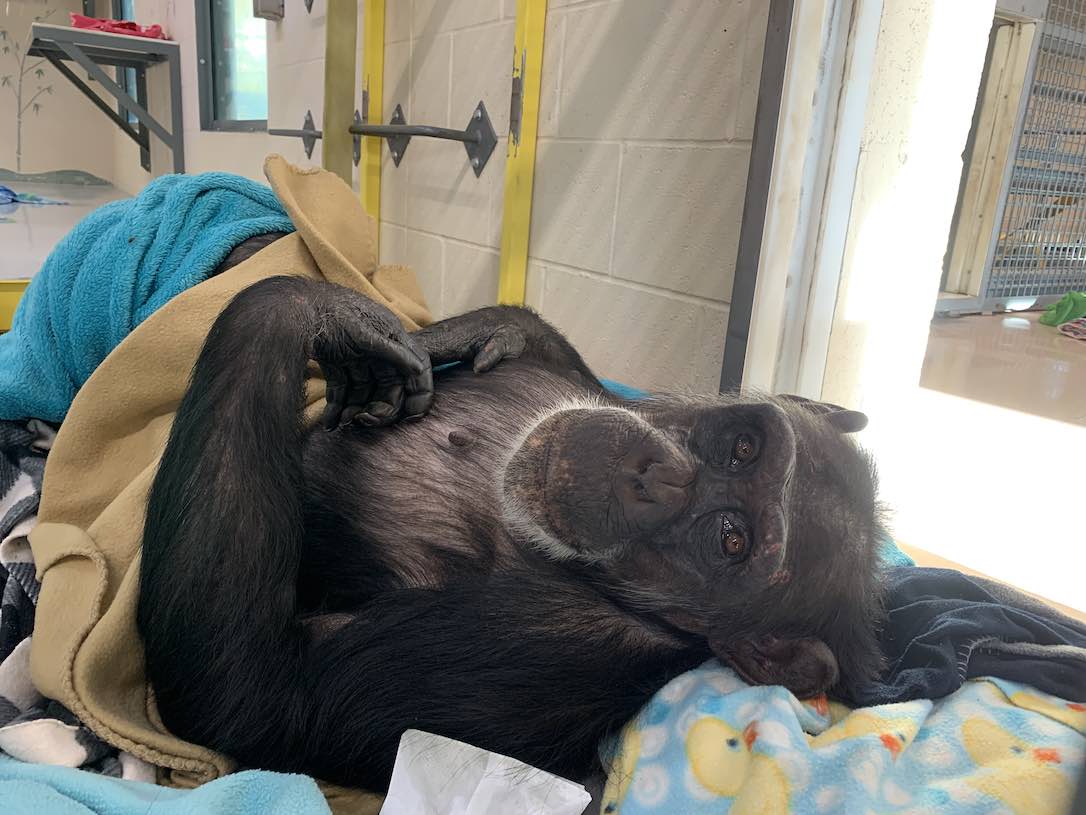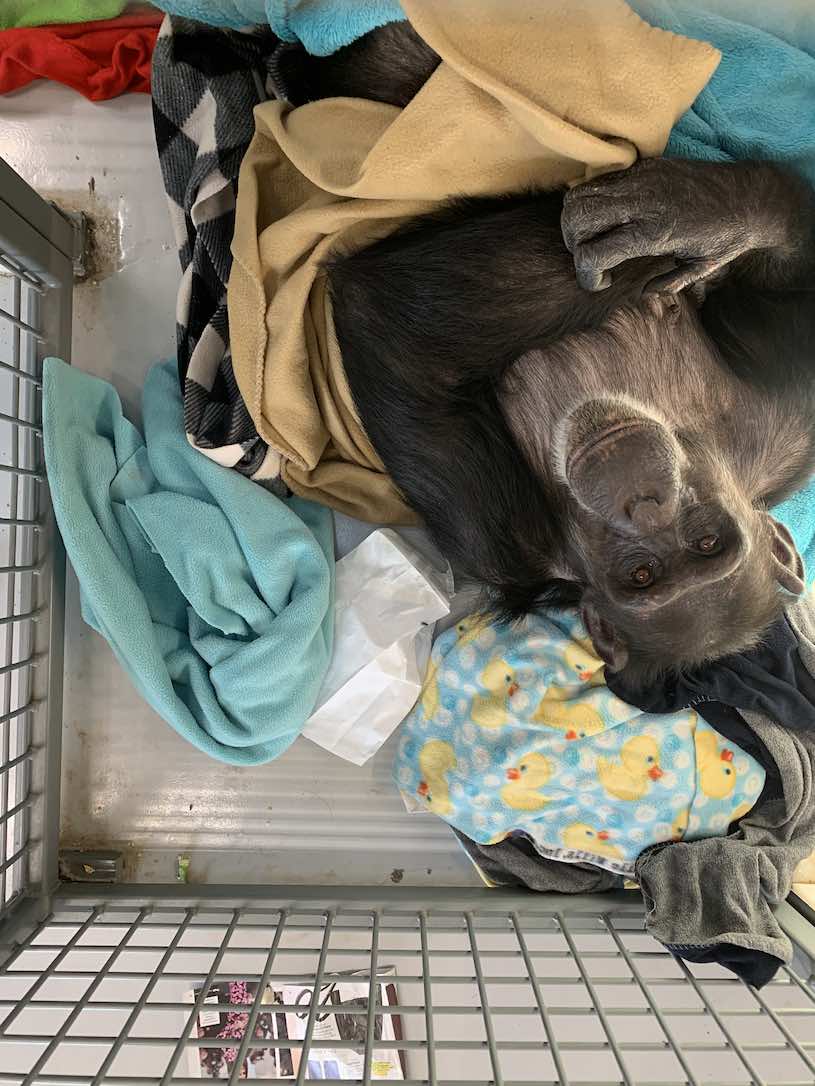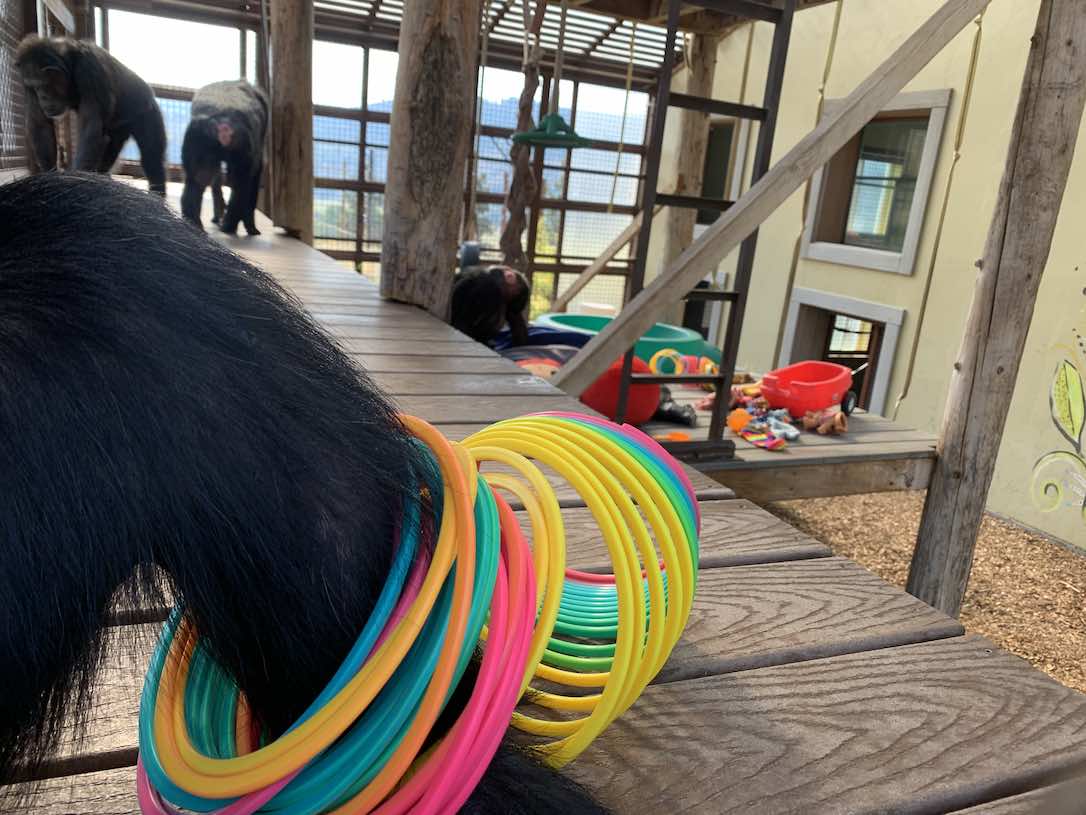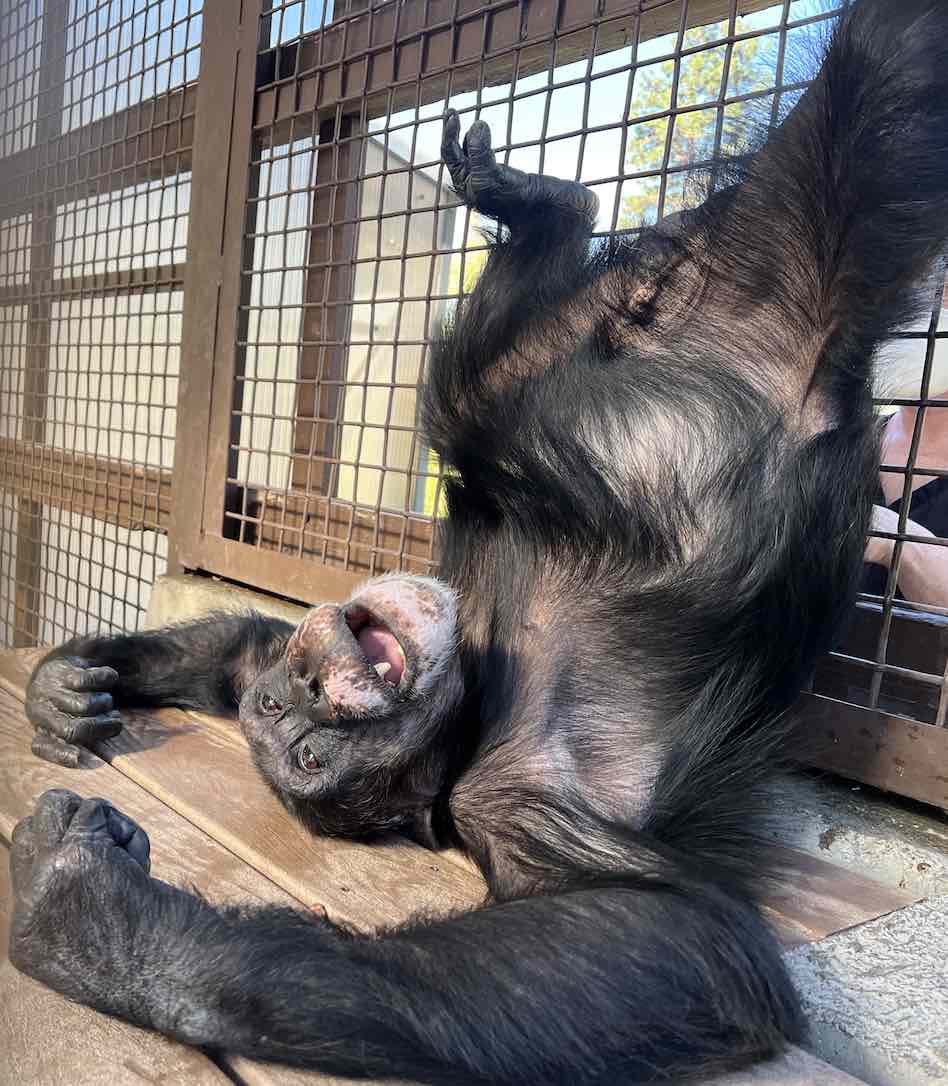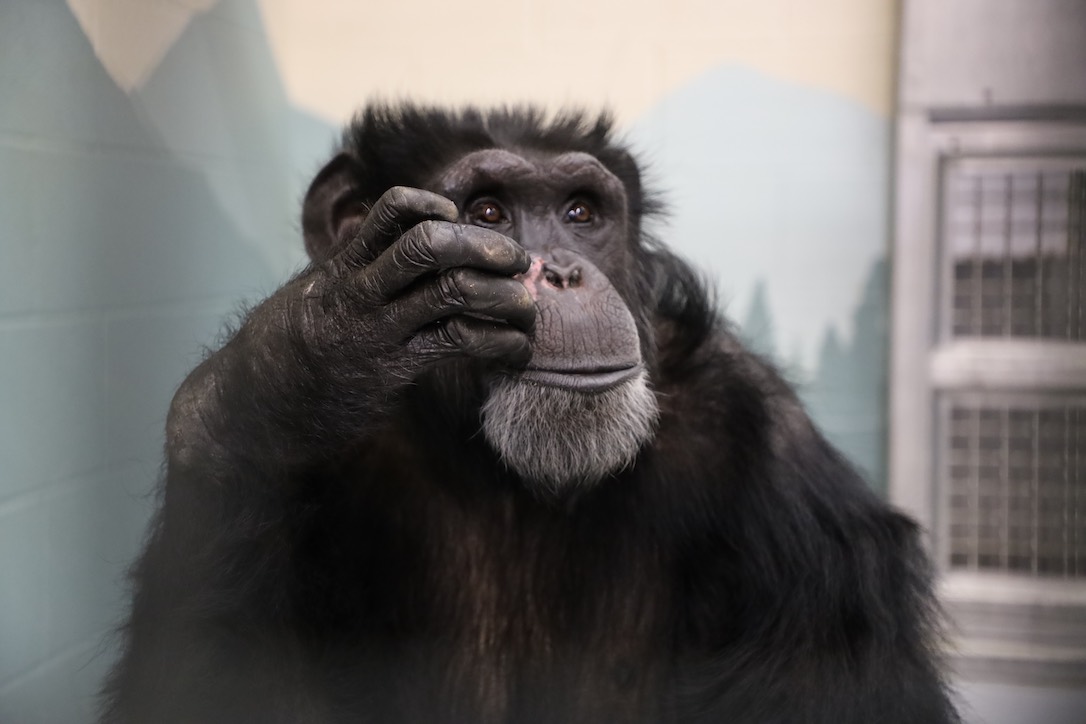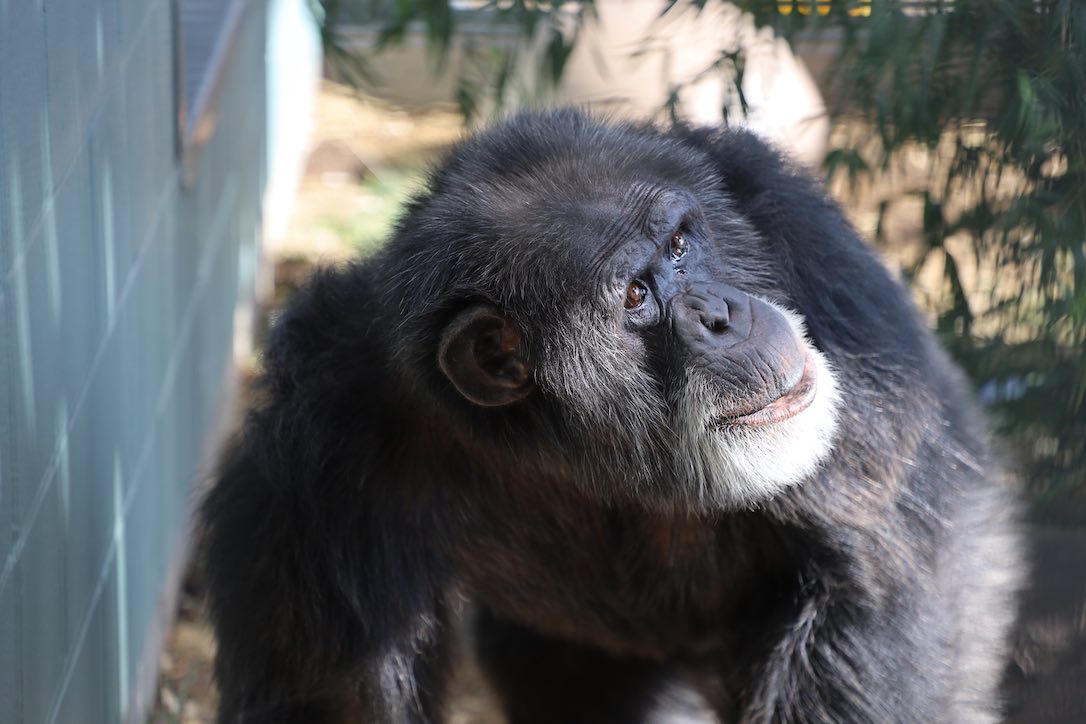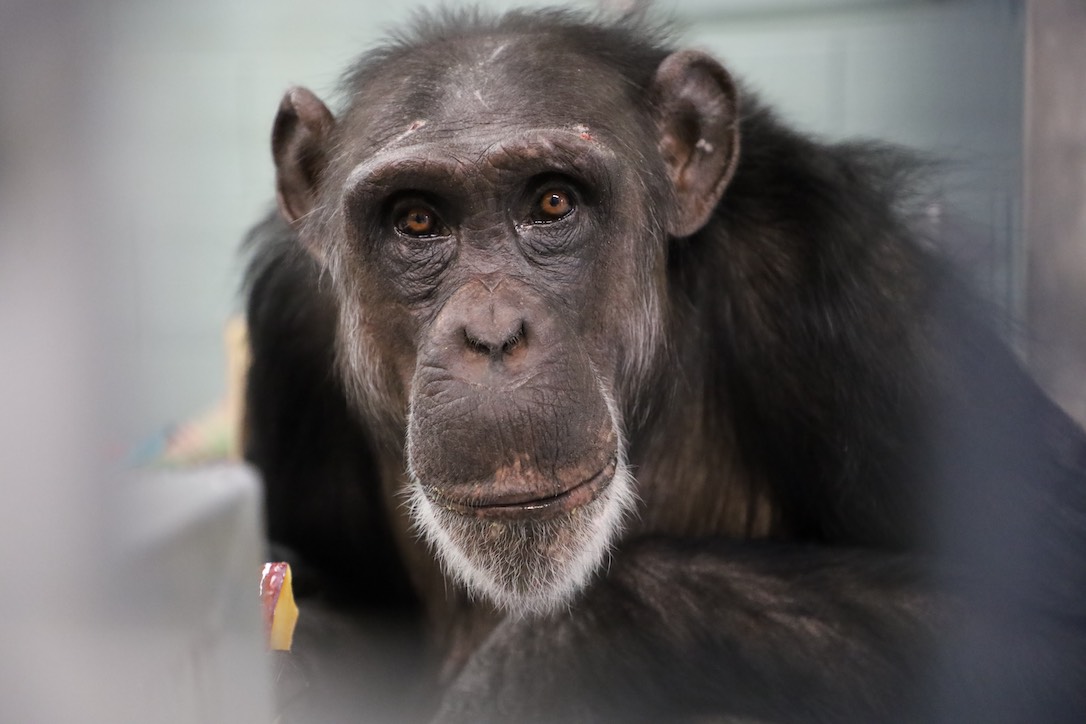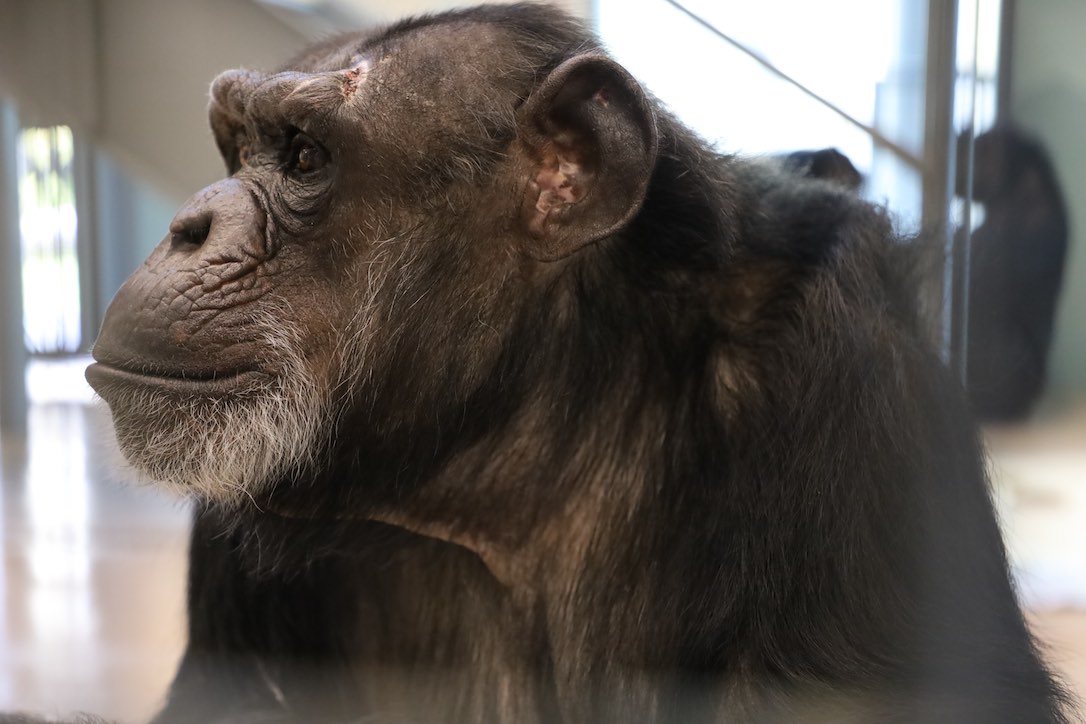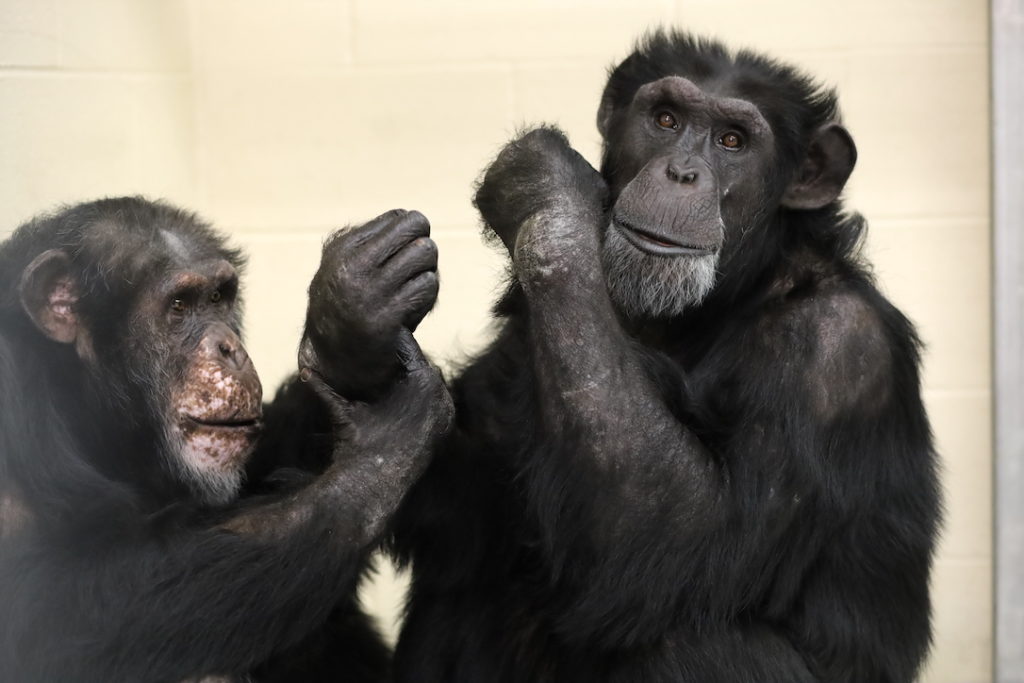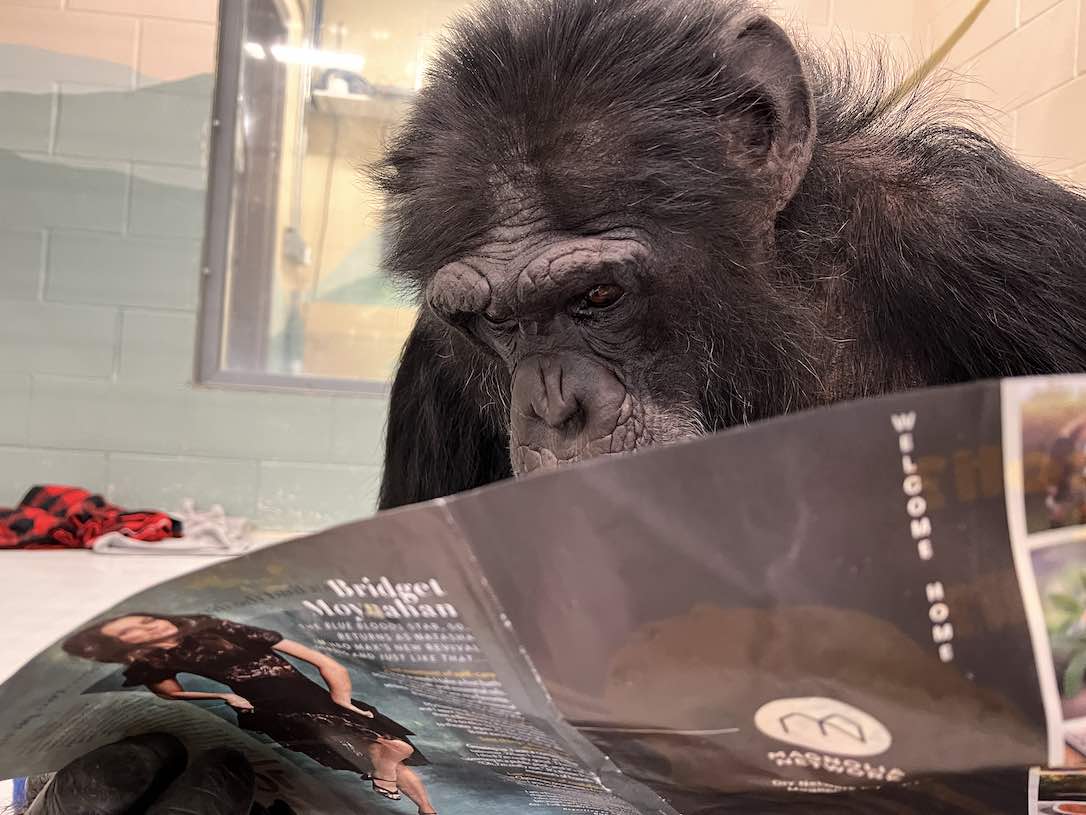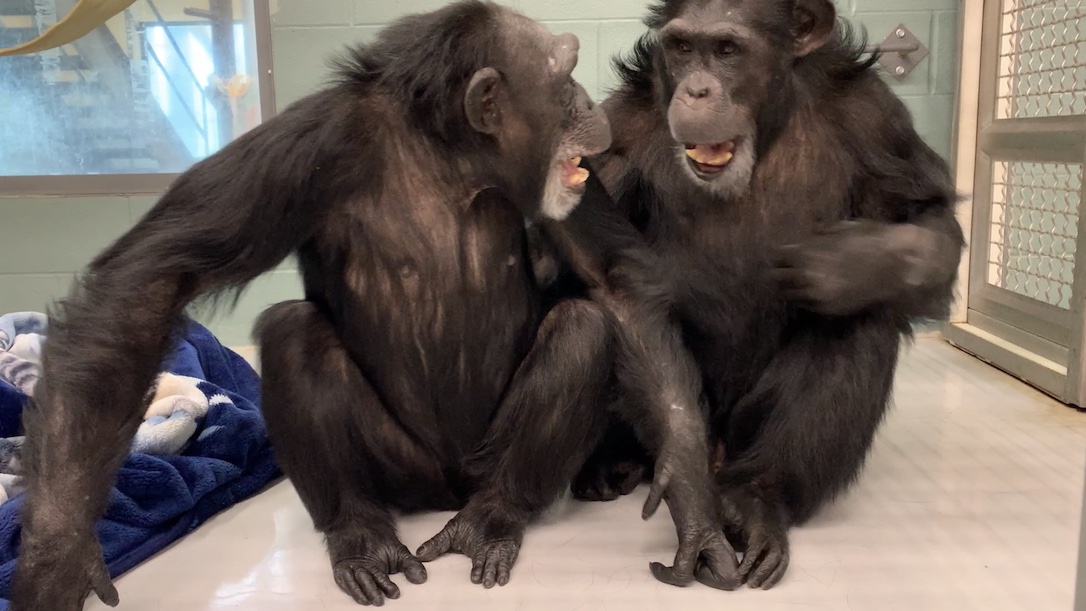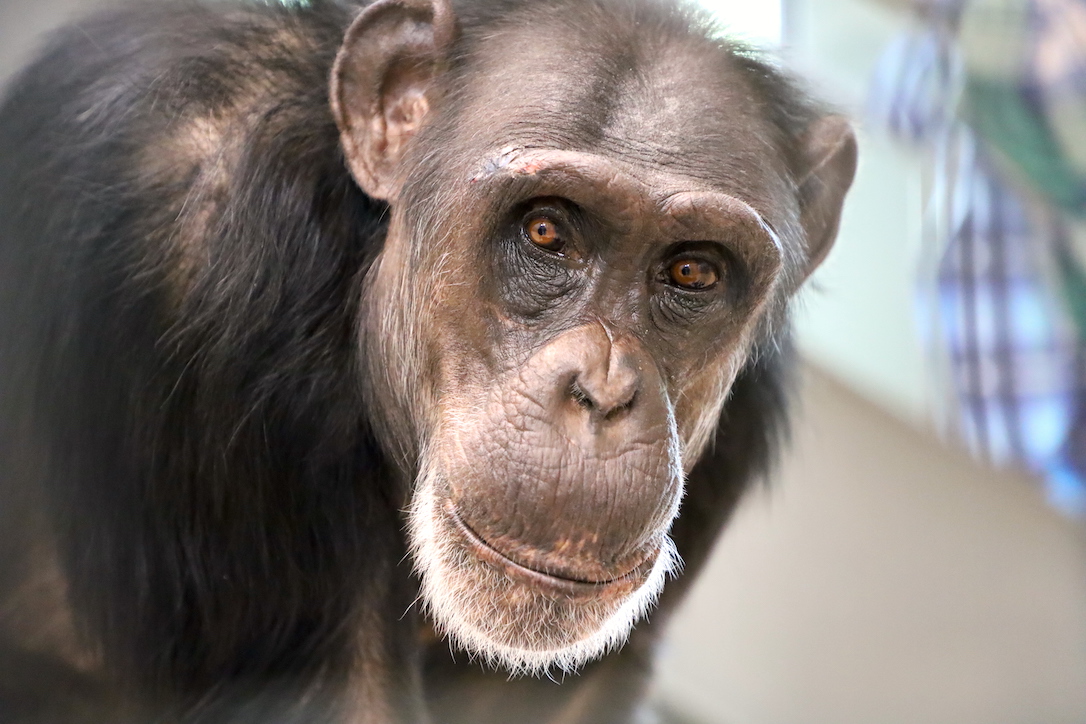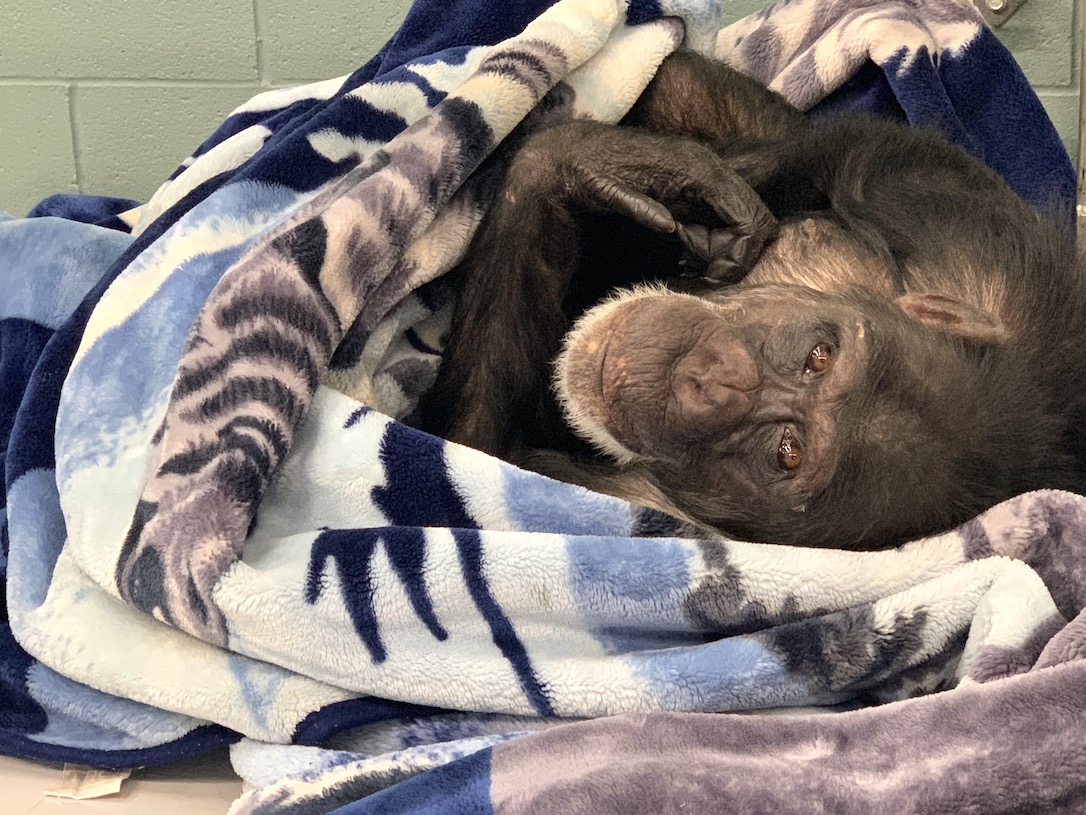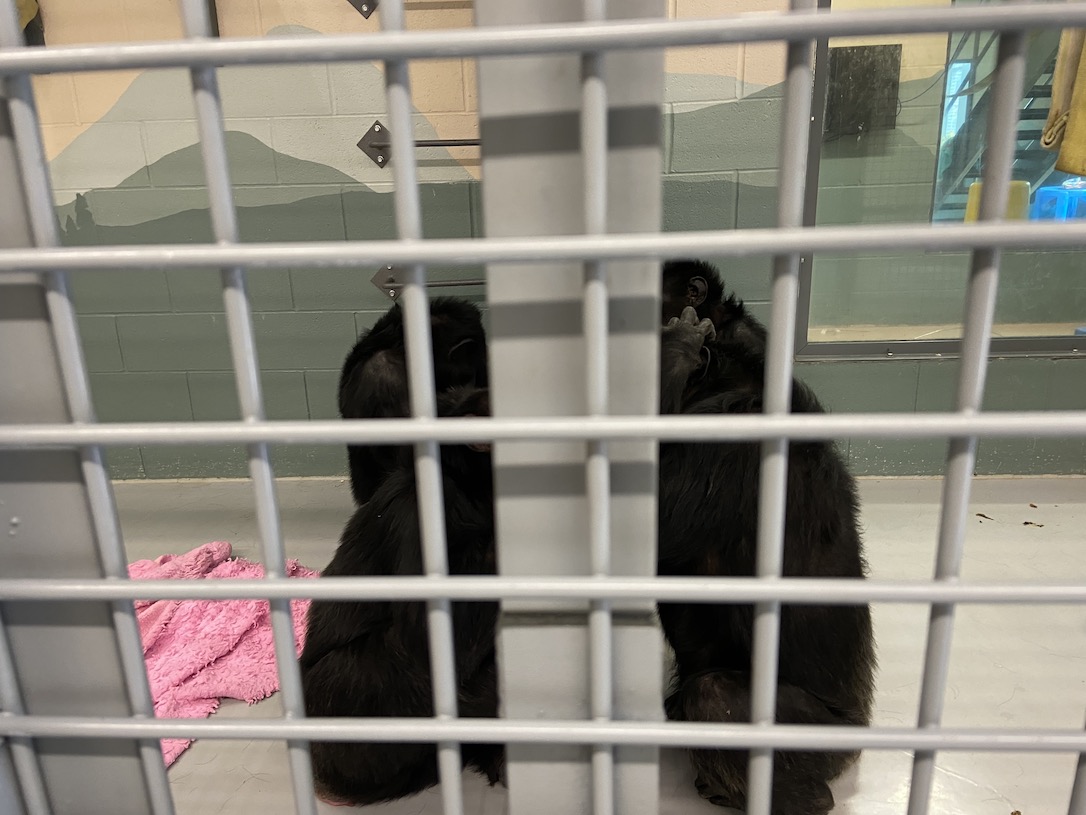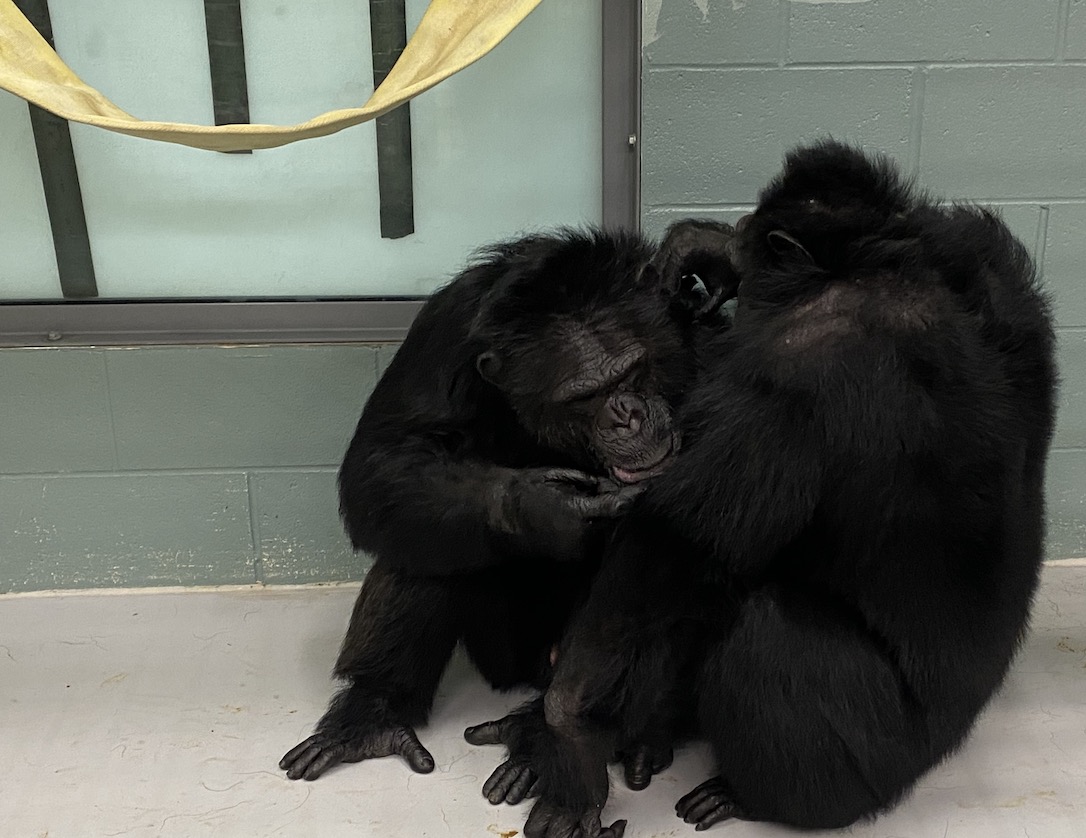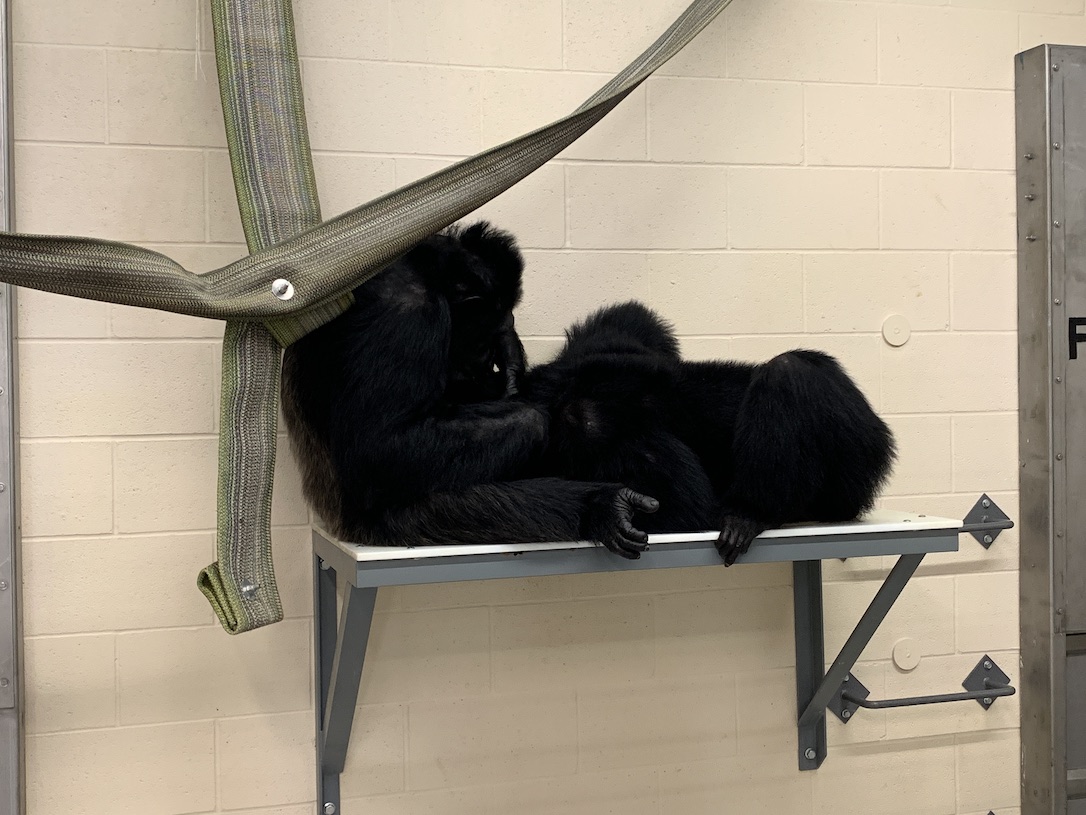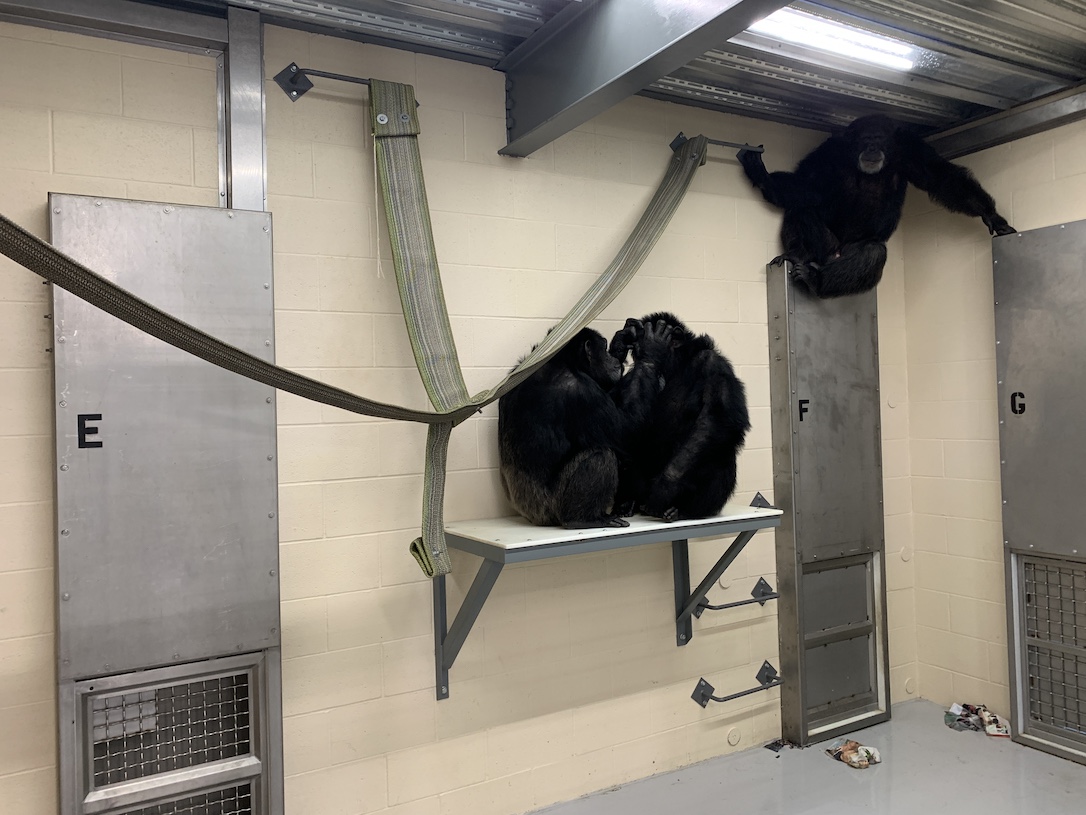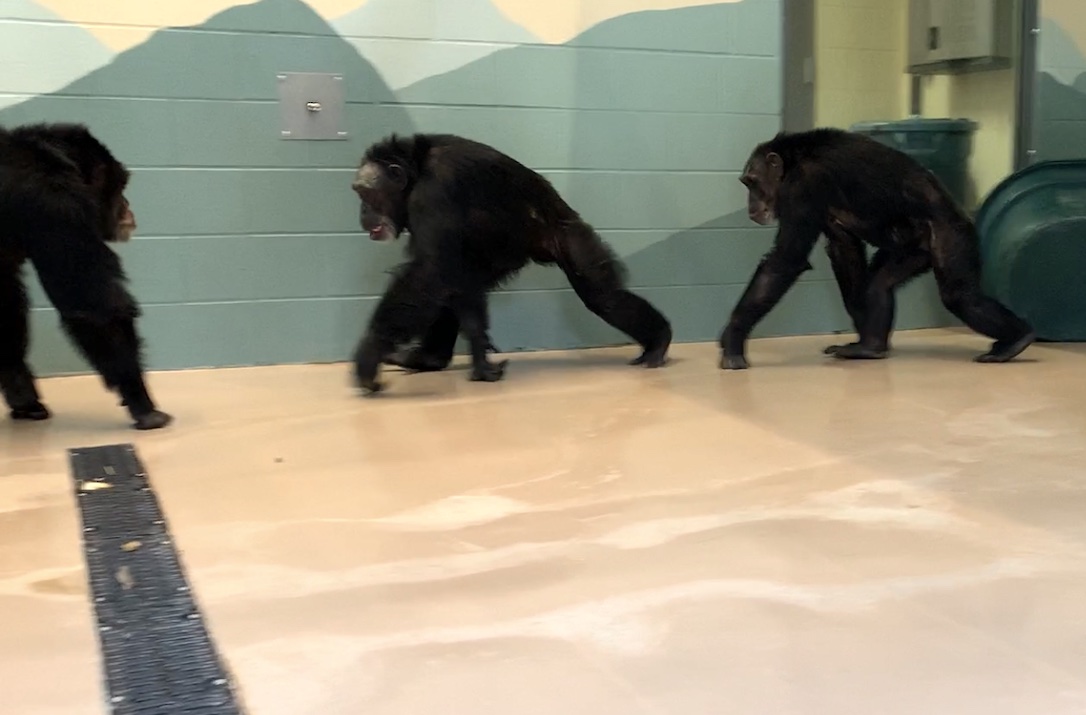During introductions it was hard tell who Honey B would become friends with. We knew Honey B enjoyed her alone time, but still appreciated the company of her chimp and human friends on her terms. When Honey B first re-met Dora they were both so excited to see each other! However, Terry and Honey B had to put the work into rebuilding a friendship. Recently, Honey B has been hot commodity with her new group. It seems like everyone wants to “mall walk,” groom, play, or just be around her. If we had to predict which chimps would bond with Honey B, Dora and Rayne would really be my only guesses. Lately, we find Honey B and Terry hanging out a lot. We have been seeing some play with her and Cy and even Gordo gets a little quick play session in from time to time.
Words can’t express the feelings I have when watching Honey B build connections with her group. It’s everything they worked so hard for and why a bigger social group is so important for chimps, especially one like Honey B.
Cy grooming Honey B:
Rayne grooming Honey B:
Honey B in the middle of a grooming train:
A series of different Honey B nests:
And one more picture for fun! Can you guess who was wearing this accessory as an anklet?
Look below for the answer!
If you said Burrito, you would be correct!
